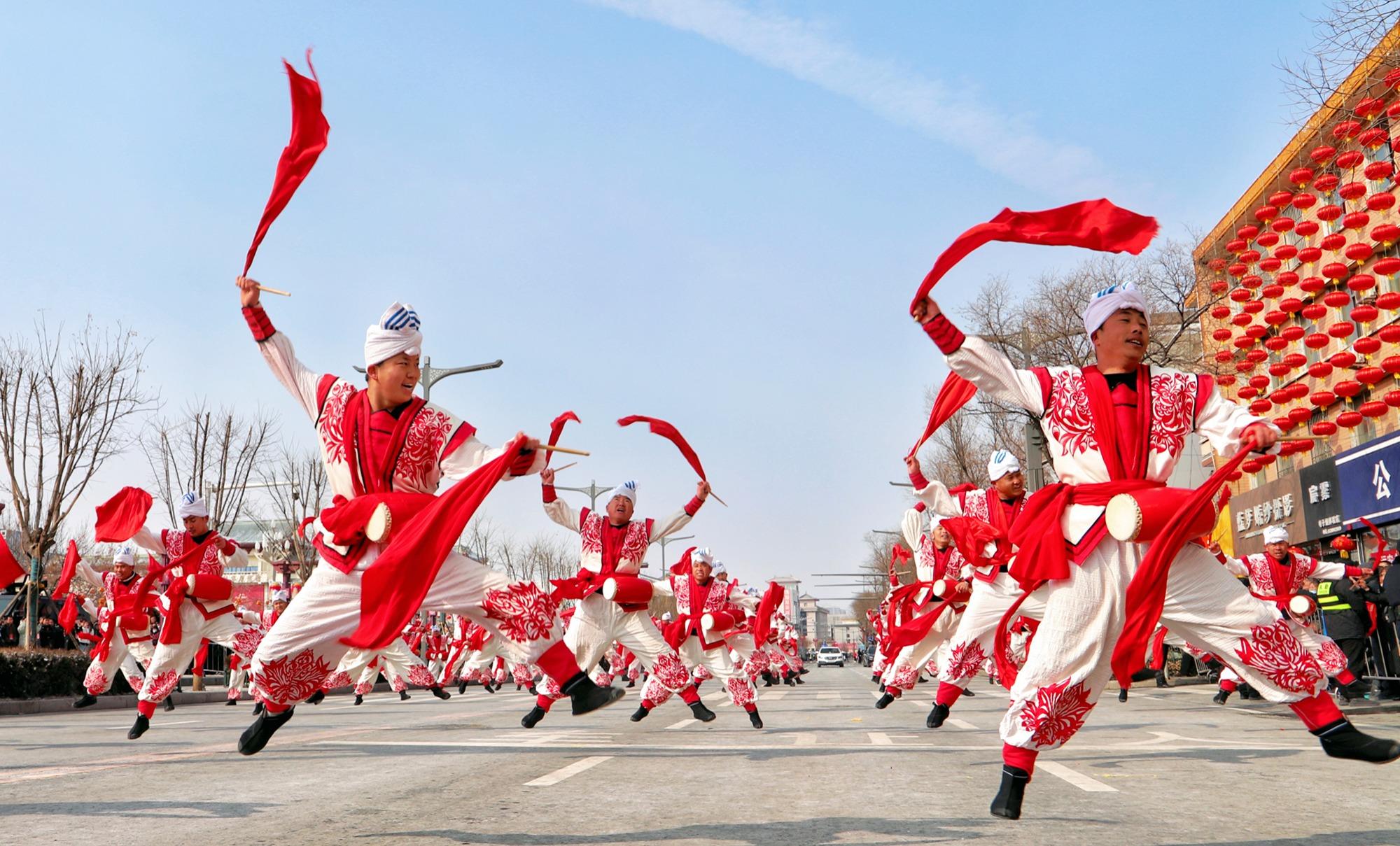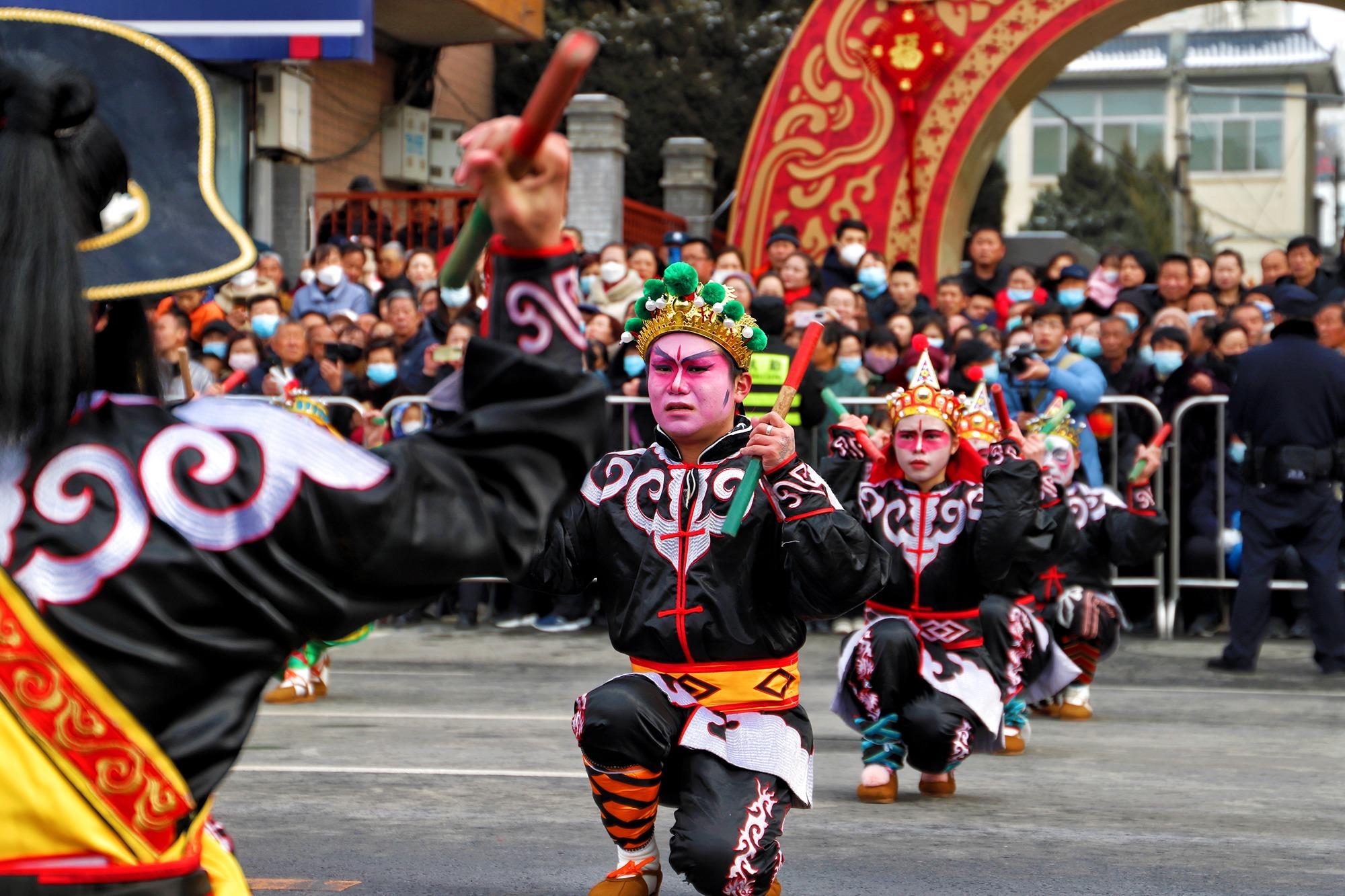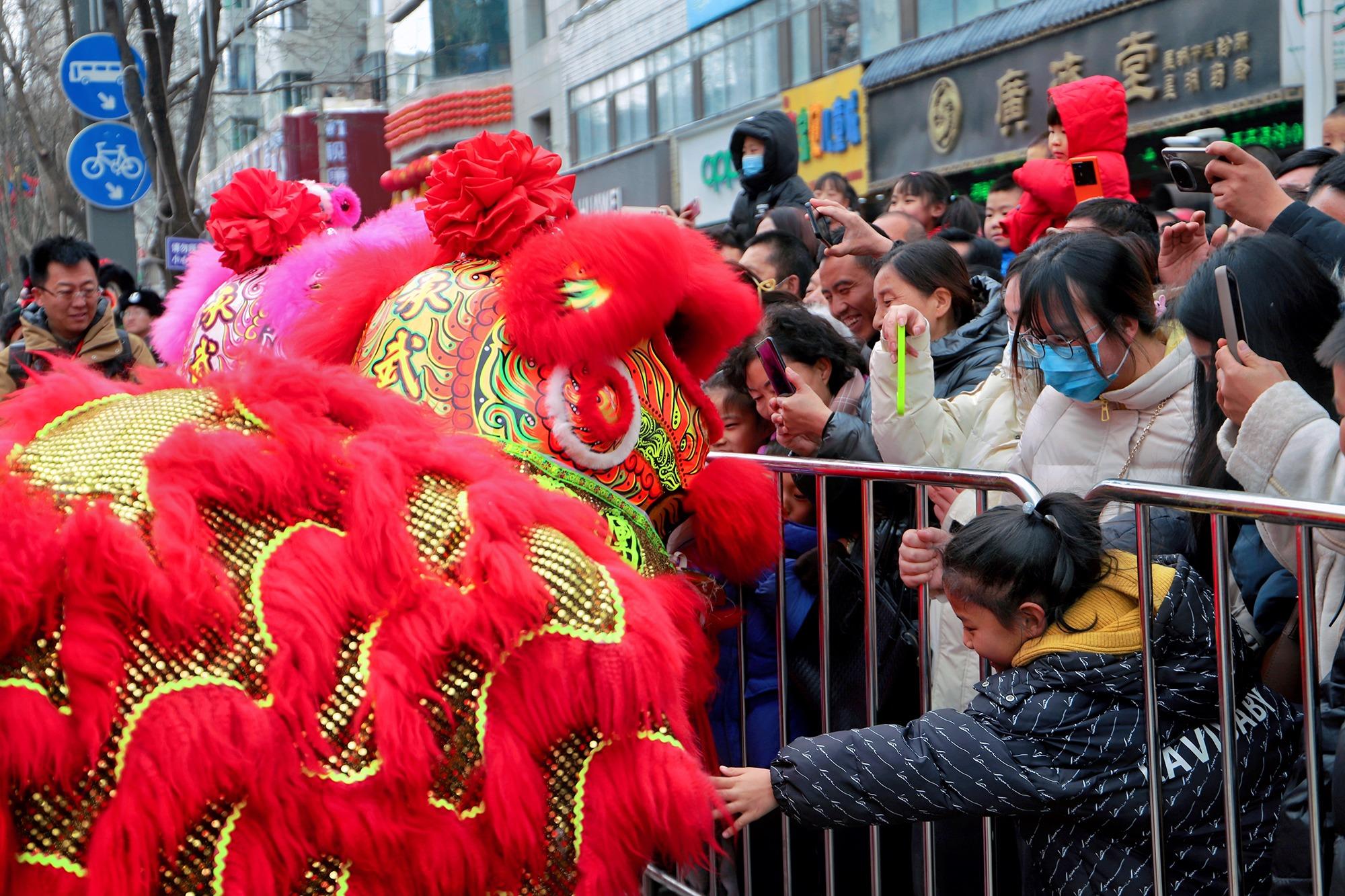Performers from across China put their cultures on display at National Yangko Exhibition
 Performers stage the Hengshan Old-style Waist Drum Dance in a street in Yulin, Shaanxi province, on Feb 13, 2024. (PHOTO / SHAANXI DAILY)
Performers stage the Hengshan Old-style Waist Drum Dance in a street in Yulin, Shaanxi province, on Feb 13, 2024. (PHOTO / SHAANXI DAILY)
For each of their shows, from the Chinese Battle Dance to the Victory Waist Drum Dance, folk artists dressed in glowing costumes using multicolored props such as fans, handkerchiefs, stilts and dragons as they performed at the National Yangko Exhibition to celebrate Chinese New Year in Yulin, Shaanxi province, from Feb 13 to 24.
The exhibition, the first of its kind in China, featured 35 performance teams with nearly 3,000 participants from nine provincial-level regions. It was organized by the city in northern Shaanxi on the Loess Plateau and supported by national and provincial-level cultural and tourism authorities.
READ MORE: A festival where culture thrives
Yangko is a collective term describing the art form of folk group singing and dancing in formation across China that was mostly influenced by farmers who would sing and dance as they worked in ancient times.
With exuberant gestures, tight rhythms, and festive music and a celebratory vibe, the performances are often put on during festive occasions such as Spring Festival.
 Folk artists perform the Yingshang Flower Drum Lantern Dance from Anhui province in Yulin on Feb 13, 2024, during the National Yangko Exhibition. (PHOTO / SHAANXI DAILY)
Folk artists perform the Yingshang Flower Drum Lantern Dance from Anhui province in Yulin on Feb 13, 2024, during the National Yangko Exhibition. (PHOTO / SHAANXI DAILY)
After centuries of development, various types of yangko thrived across the country, characterized by the adoption of local props, musical instruments and folk storytelling.
"A total of 26 national-level and five provincial-level intangible heritage items were put on display on the same stage," said Zhang Shengbao, chief director of the exhibition. "In the past, we mostly enjoyed the loud, jolly vibe, but now we also value the culture represented by the dances."
The Yingge Dance was among the national-level intangible heritage items seen.
Practiced in the Chaoshan region in Guangdong province and inspired by excerpts from the classic Chinese novel Water Margin, the dance tells a story of how rebels managed to rescue one of their brothers imprisoned by corrupt officials. Dancers wave a pair of short sticks and make powerful and forceful movements, earning the performance the nickname Chinese Battle Dance.
 Artists from the Chaoshan region in Guangdong province perform the Yingge Dance on Feb 13, 2024. (PHOTO / SHAANXI DAILY)
Artists from the Chaoshan region in Guangdong province perform the Yingge Dance on Feb 13, 2024. (PHOTO / SHAANXI DAILY)
The dance also integrates local elements to enrich the storytelling. Chen Jiahui, 18, portrayed Shi Qian, a sneaky thief in the novel. He said his style of dancing integrated the worship of snakes in Chaoshan and southern Fujian regions.
"I've been learning snake dance for five or six years, and the audience's enthusiasm has moved me," he said, adding that the team put on the show with light costumes despite the cold weather to give the most authentic performance.
The troupe's dedication was also greeted by local yangko groups. The Hengshan Old-style Waist Drum Dance, from Yulin's Hengshan district, was also a star during the exhibition.
 Artists from a local yangko troupe stage a show on Feb 13, 2024. (PHOTO / SHAANXI DAILY)
Artists from a local yangko troupe stage a show on Feb 13, 2024. (PHOTO / SHAANXI DAILY)
Also dubbed the Victory Waist Drum Dance, the routine is known for dynamic and vigorous movements, fast-paced rhythms and diverse choreography, as dancers march forward while smoothly shifting into different formations.
"We hope that people can appreciate the masculine strength in our performances, as well as the rugged, unconstrained culture in Shaanbei (northern Shaanxi) characterized by the wilderness and rough climates," said Liu Zhenjun, head of the workers' union of Hengshan district's culture and tourism bureau, who added that the Hengshan Old-style Waist Drum Dance will participate in an international tourism promotion event in March.
Other forms of yangko, such as the Yingshang Flower Drum Lantern Dance from Anhui province, the Jishan Stilt Walking Monsters Dance from Shanxi province and the Manchu Flower Stick Dance from Northeast China, also made their debut in Yulin.
 Spectators interact with "lions" of a lion dance troupe from Guangdong province on Feb 13, 2024. (PHOTO / SHAANXI DAILY)
Spectators interact with "lions" of a lion dance troupe from Guangdong province on Feb 13, 2024. (PHOTO / SHAANXI DAILY)
Locals have passionately welcomed the show.
"It was loud, crowded and cheerful every day," said Liu Wangwang, a local resident."It was mind-blowing to enjoy the variety and greatness of traditional folk art forms at our doorstep."
ALSO READ: 'Village fires' burn bright throughout time and space
The city received some 2.55 million tourists and generated about 1.28 billion yuan ($178 million) in revenue, both more than double the visitors and revenue seen during the same period last year, official statistics showed.
"The exhibition displayed the unique charm of traditional culture, as well as the contemporary value and vitality of classic intangible heritage items," said Gao Xiaofeng, head of Yulin's culture and tourism bureau.
Li Xujia contributed to this story.
Contact the writers at liangshuang@chinadaily.com.cn


